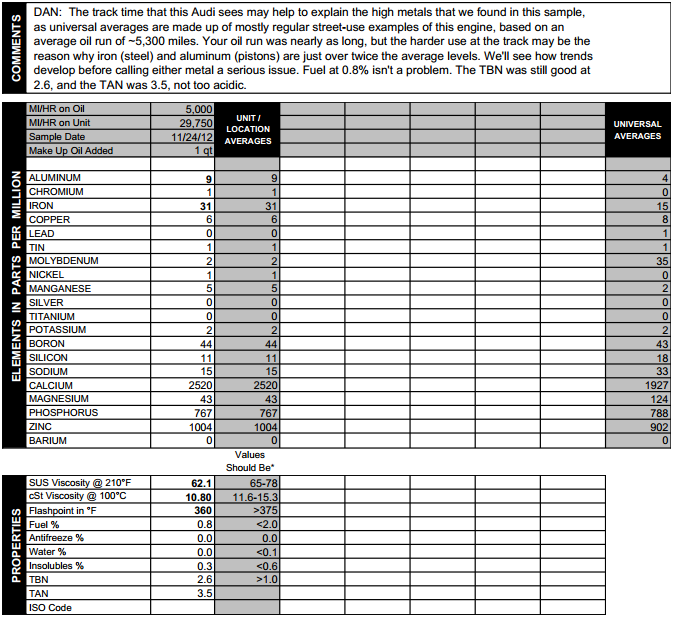Originally Posted By: Tucson Five-O
wemay,
You are the king of changing oils!
But in all seriousness, yes it seems that fuel dilution and it's effect on oil viscosity is the current problem that DI owners are facing, surpassing intake valve deposits. Once manufacturers discovered that heating up the intake valves, to prevent the lighter oil fractions depositing on the valves worked, along with more sophisticated PCV vapor handling systems, and late closing intake valves on the compression stroke to expose the valve face to the detergents in the fuel, the higher pressure fuel passing by the rings is the current issue.
If I still had a DI engine, I would tailor my OCIs, via OLM or manually, to the hot viscosity of the oil, starting with your guess of 3000 mile OCI. I'd set the limit on a 5W-30 oil to 9.0cst minimum, a 5W-20 oil to 7.0cst minimum, until I saw the Fe levels were not excessive, compared to a similar port injected engine. And I would adjust that OCI, as we know the oil continues to thin as it is subjected to the constant fuel dilution of a DI engine.
And yes, driving habits, such as short tripping, particularly in cold weather will ascerbate the problem, but no one can drive a GM DI engine, for instance, without seeing the effects.
I would also think about using an oil with maybe a bit more viscosity in the approved 5W-30 range, that is A5/B5 rated, as opposed to PP or QSUD, that may not be, to give a little bit more time before the oil thins to some critical value.
Truly a step back in engine design and end user satisfaction if you ask me.
Gary
All great points Gary, especially concerning my newfound OCD conerning this vehicle. Lol


